We may earn money or products from the companies mentioned in this post. As an Amazon Associate, I earn from qualifying purchases.
During our recent trip to Greece, we had the opportunity to visit the incredible Athens National Archaeological Museum. This Museum, located in Athens, is one of the world’s largest repositories of Greek artifacts and boasts a wide array of unique exhibits spanning much of history.
There are so many fantastic museums and sites to visit in Athens that it’s hard to see them all, so I wanted to give you a detailed first-hand account of our visit to the National Archaeological Museum so you can decide whether to go there. Our family went when Abby was 13, and Jake was 11, and all of us enjoyed this outing!
Additionally, we recommended this Museum to my Dad during his recent trip. He left me a message telling me how much they enjoyed it and appreciated the recommendation!
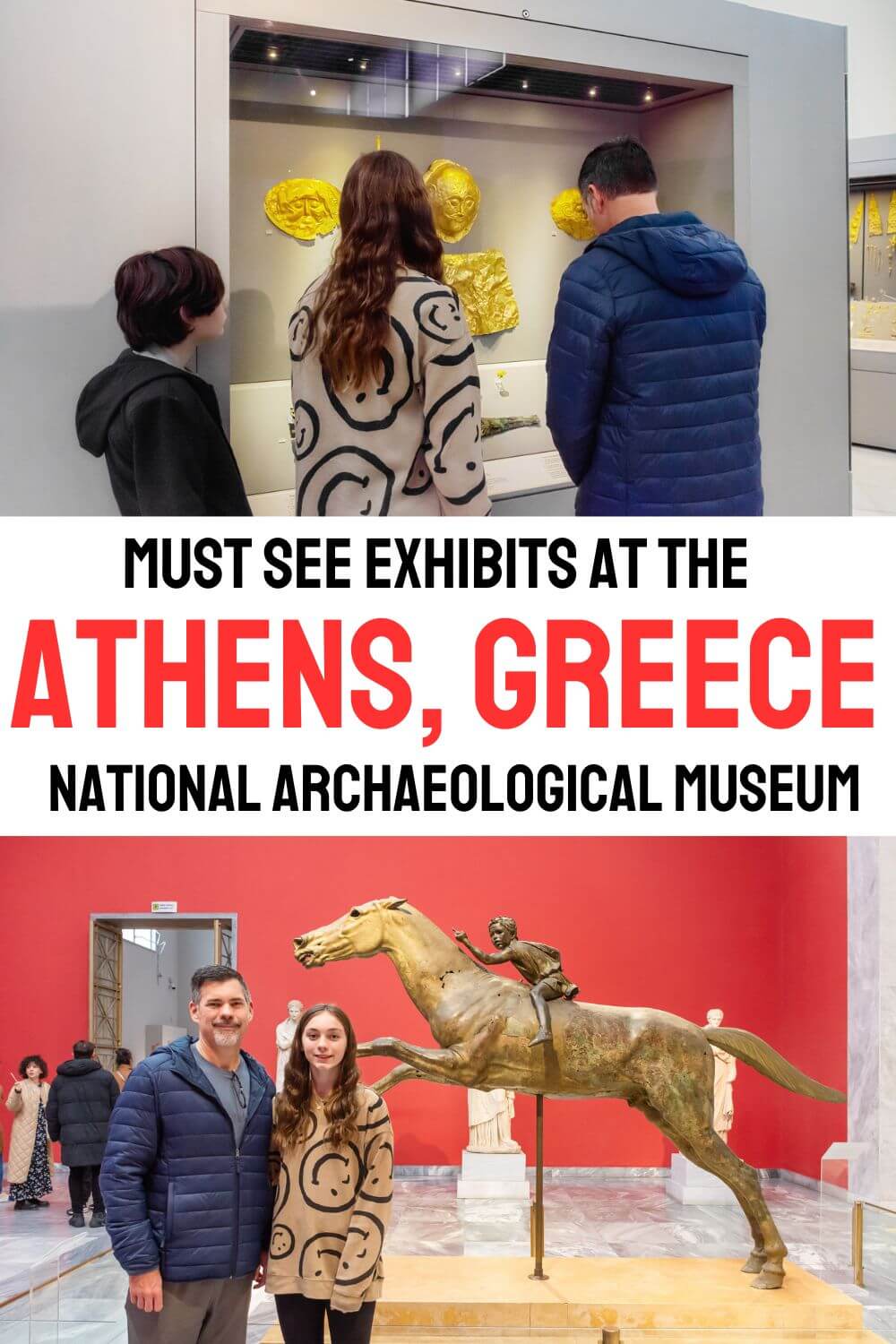
Athens National Archaeological Museum
A trip to the National Archaeological Museum provides an educational and fun diversion from touring the beautiful districts in Athens. It is a fantastic way to immerse yourself in the rich history of the Greek people.
If you’re heading to Athens, take the time to visit the National Archaeological Museum. It’s a great way to escape the winter cold or the summer heat for a half day. You can pair it with an outdoor activity the other half of the day, such as visiting the Ancient Agora of Athens!
This Museum has world-renowned relics on display, like the Antikythera Mechanism and the Mask of Agamemnon. The galleries will awe you with massive statues, fascinate you with a seemingly endless array of delicate vases and figurines, and intrigue you with gorgeous solid-gold jewelry and other priceless treasures.
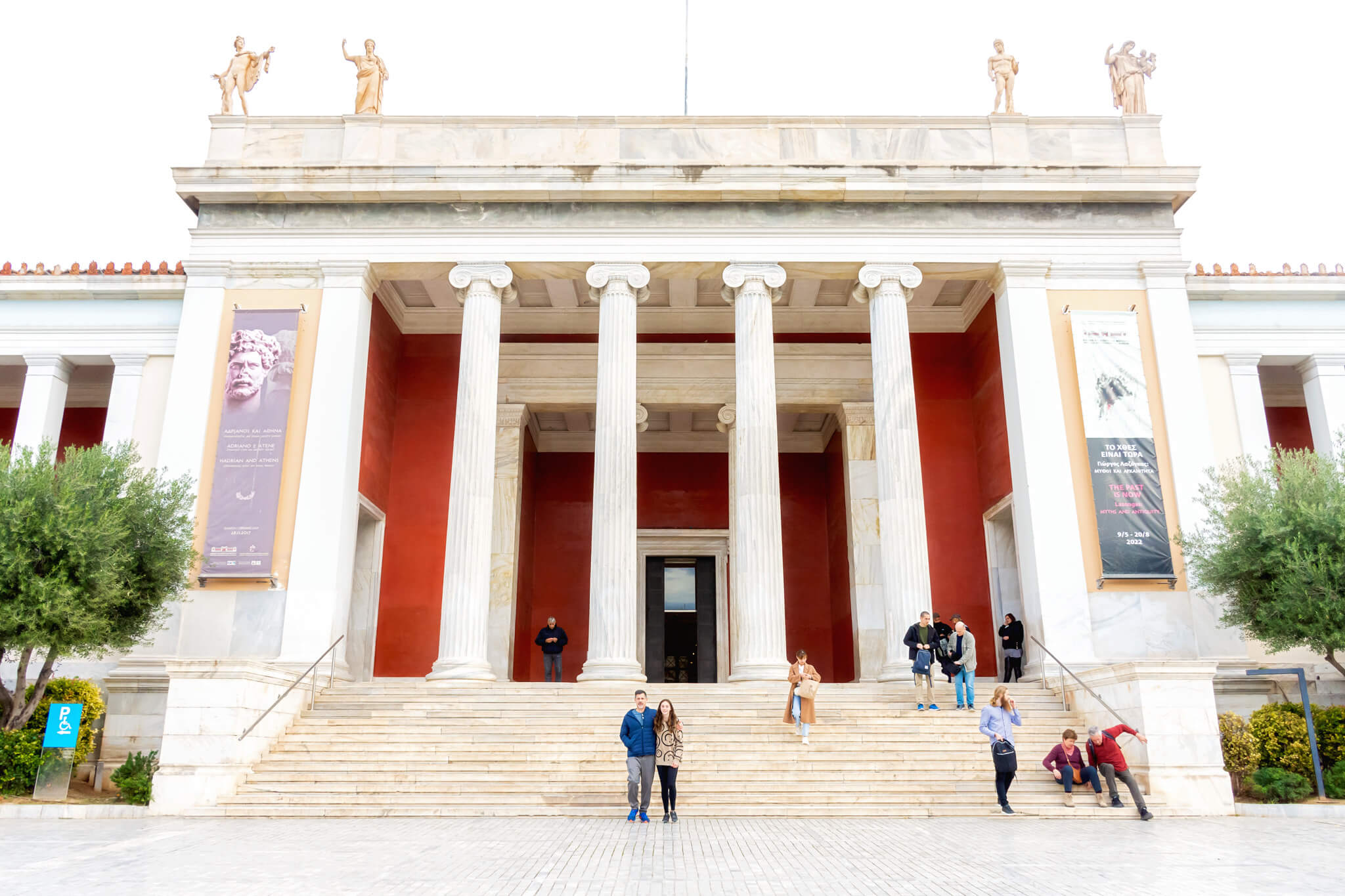
Visiting The Athens National Archaeological Museum
The National Archaeological Museum Athens is located about a 10-minute drive north of the Plaka District, Athens’s most popular tourist area. It’s slightly out of walking distance for most visitors, and I recommend planning to take an Uber or a taxi.
However, if you feel like getting the exercise, it’s about a 30-minute walk from the area around the Acropolis to the Museum. If you walk, be sure to check the weather before leaving. The Museum is not overwhelming, but I recommend wearing comfortable shoes as you will be on your feet.
Admission is very inexpensive. You can also book private National Archaeological Museum tours if you’d prefer.
National Archaeological Museum Address & Hours
Address: 28is Oktovriou 44, Athina 106 82, Greece
Open November 1st – March 31st: Tuesday: 13:00 to 20:00, Wednesday until Monday: 08:30 to 15:30
Open April 1st – October 31st: Tuesday: 13:00 to 20:00, Wednesday to Monday: 08:00 to 20:00
Outside the Museum and the Cafe
The Museum sits on the eastern side of a large campus the size of several city blocks. In the center is a promenade and steps, creating an impressive grand entrance with massive steps rising to meet the Museum atop a hill.
On the west side of the campus is a beautiful sit-down or carry-out restaurant that serves a wide variety of local Greek food. Before our visit to the Museum, we had lunch here. The selection and service impressed us! It’s undoubtedly one of the biggest and tastiest museum cafes we have ever eaten at!
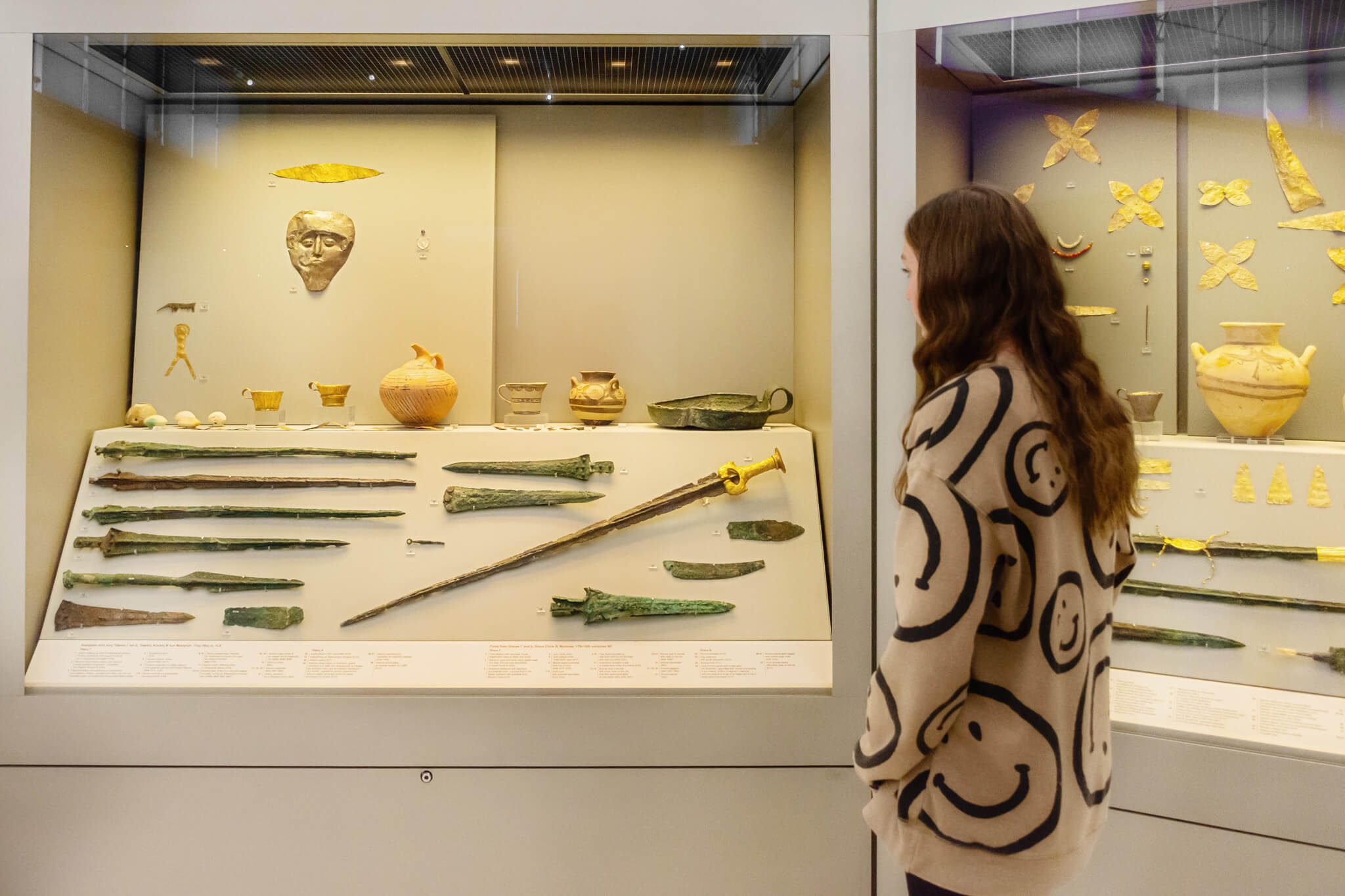
Inside the Athens National Archaeological Museum
Plan to spend around three hours or so viewing everything on permanent display. The building is less expansive than many other well-known museums, like The Louvre, which we visited in June when we spent 4 days in Paris. Hence, a rather approachable half-day excursion.
When we went there in late November, there was not a line, but it may be a lot busier in peak season. There are metal detectors at the door. Backpacks and large bags are not allowed. Therefore, be prepared to leave any bags you are carrying at the front of the Museum.
The inside of the Athens National Archaeological Museum is easy to navigate and encompasses two levels. We didn’t encounter stairs or wheelchair-inaccessible areas. The Museum is divided into several extensive viewing galleries. At the time we visited in November, it was not overcrowded. Therefore, we were able to explore with ease.
Guards are stationed in every room. Pictures are allowed, but we were quickly reprimanded by a guard when one of our kids struck a pose that copied the stance of one of the statues. I guess taking pictures of people imitating the art is not allowed!

History of the Athens National Archaeological Museum
Founded in 1829, the National Archaeological Museum in Greece was established after the country’s revolutionary struggle and liberation from Ottoman rule.
Originally located in Aegina, the first capital of Greece, it later moved to Athens in 1834. The current museum building, constructed between 1866 and 1889, was sponsored by the Bernardakis family and is based on plans by L. Lange, with modifications by E. Ziller for the facade.
The Museum officially opened in 1889, presenting permanent exhibitions that included parts of the current Collection of Prehistoric Antiquities and the Collection of Sculptures. Throughout the first half of the 20th century, the Museum expanded its collection through various excavations in Greece. In 1932-1939, an eastward expansion took place according to architect G. Nomikos’ plans, coinciding with the outbreak of World War II.
The Museum buried artifacts in pits to safeguard antiquities during the War, protecting them from destruction and looting. You can discover truly amazing photos online of these masterpieces being put into wood crates, filled in with dirt, and then buried to protect them from the possibility of being damaged or stolen during the War. Post-war repairs occurred in 1947, and the re-exhibition of collections concluded in 1964.
National Archaeological Museum Building Architecture and Design
The Athens National Archaeological Museum in Greece stands not only as a guardian of ancient treasures but also as a testament to architectural ingenuity. The Museum’s design blends neoclassical and Renaissance elements, reflecting Greece’s historical and cultural richness. You can see the main entrance in my photo below!
The Museum’s construction, initiated in 1866, embraced the neoclassical style prevalent in the late 19th century. This choice echoed the cultural sentiments of the time, emphasizing a revival of classical Greek aesthetics. The original plans of architect Ludwig Lange laid the foundation for a structure that exuded classical elegance. His vision contributed to the enduring aesthetic appeal of the Museum.
The Museum’s facade underwent modifications by Ernst Ziller, introducing Renaissance influences. These enhancements added a touch of grandeur, elevating the Museum’s visual impact. The Bernardakis family from Saint Petersburg played a pivotal role in the Museum’s growth, providing the land for construction. This collaboration resulted in the expansive architectural canvas that houses Greece’s archaeological treasures today.
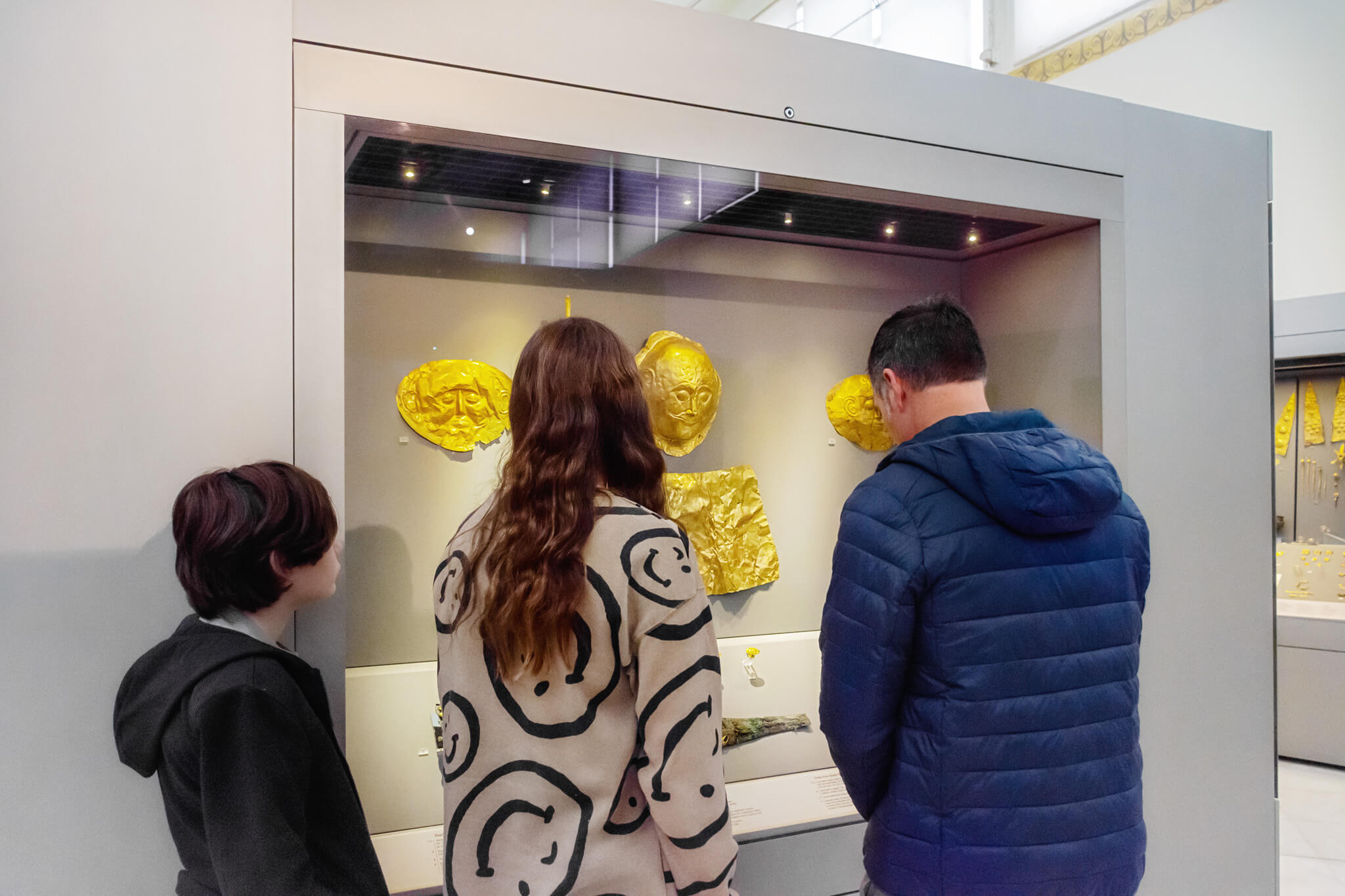
Athens National Archaeological Museum Exhibitions
The National Archaeological Museum has a massive 11,000-exhibit collection encompassing all Greek History periods, beginning with prehistoric and Minoan civilizations. It gives a sweeping treatment of some of the most formative and decisive periods of Western civilization and European culture.
The Museum showcases antiquities from the 6th millennium BC to the 4th century AD, representing the ancient Greek world, its cultural achievements, and interactions in the eastern Mediterranean. Some of the most impressive works come from Classical, Roman, and Hellenistic times. Greek artistry was arguably at its height with respect to the rest of the Western world during these periods.
The south section of the National Archaeological Museum is home to the Epigraphic Museum of Athens. This Epigraphic Museum includes a display of around 14,000 Greek inscriptions dating from prehistoric to recent times.
The Epigraphic Museum of Athens was founded in 1885 to enable the protection, preserving, studying, and exhibiting of ancient inscriptions on stone. It houses the most extensive collection of ancient Greek inscriptions in the world. These inscriptions are primary historical sources that give insight into all aspects of Greek antiquity’s economic, political, and cultural life.
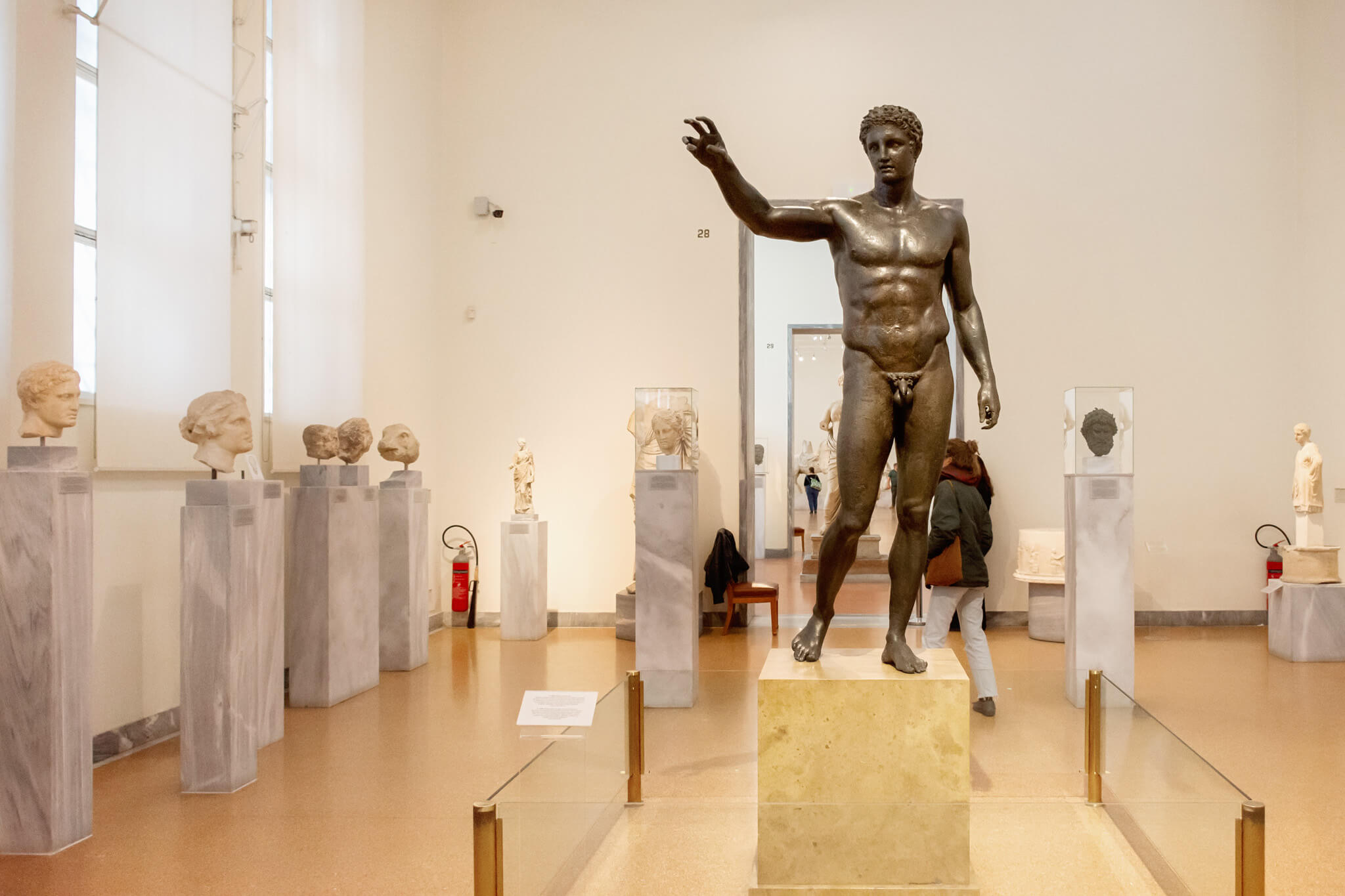
National Archaeological Museum Permanent Exhibitions
Ground Floor
- Mycenaean Antiquities
- Neolithic Antiquities
- Cycladic Antiquities
- Egyptian Antiquities
- Metalwork
- Stathatos Collection
- Stathatos Collection
First Floor
- Cypriot Antiquities
- Exhibition of Idols
- Collection of Antiquities of Thera
- Vessels and Decorative Arts
- Glass Exhibition
- Jewelry Exhibition
- Vlastos-Serpieri Collection
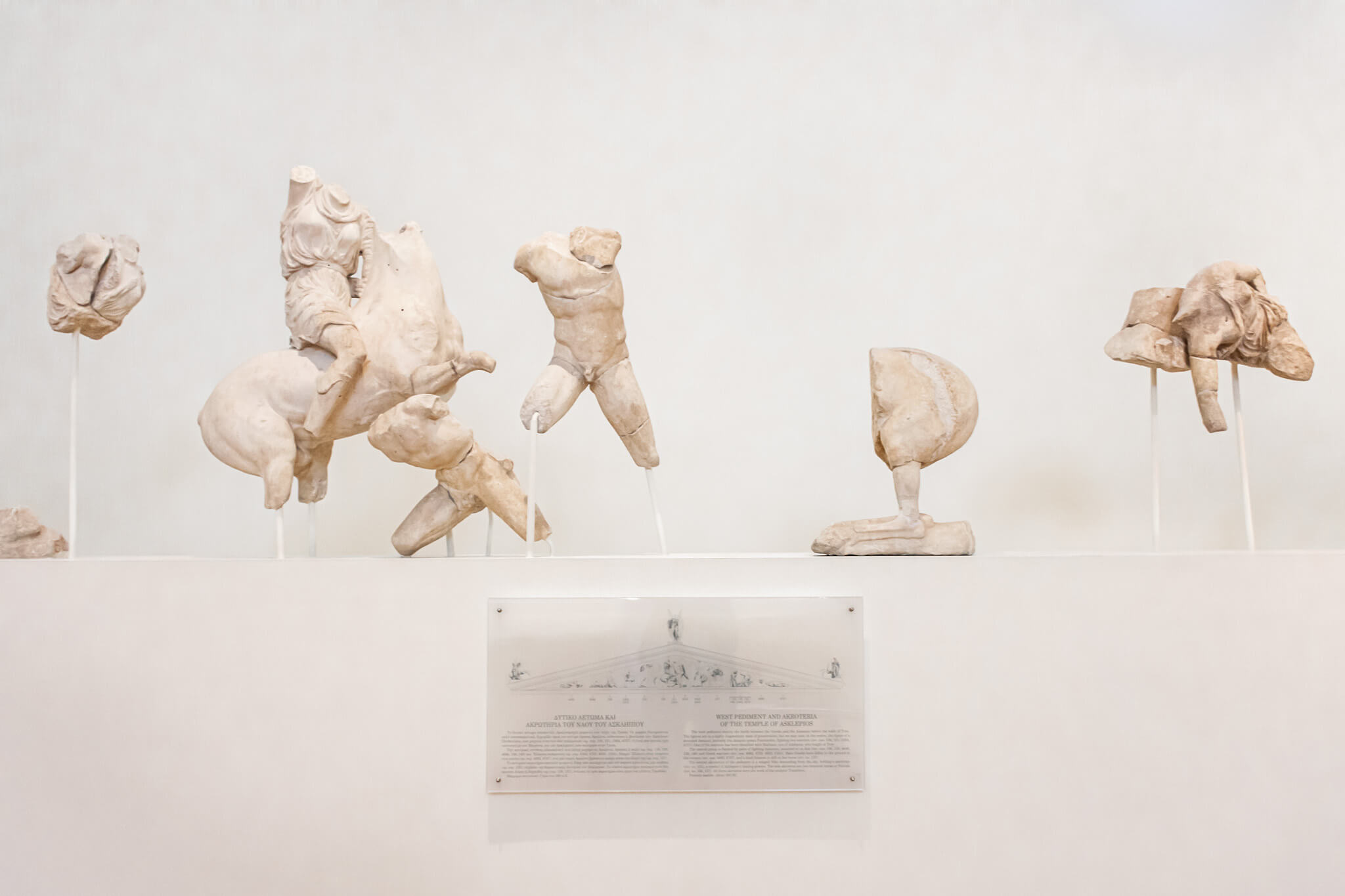
10 Must-See Exhibits at The Athens National Archaeological Museum
The Athens National Archaeological Museum is expansive. It has so many fantastic and beautiful works of art that it’s hard to narrow down a list of the most impressive artifacts. Many of these pieces are thousands of years old, have beaten incredible odds to survive to the present, and are so rare that they represent an entire civilization or a historical period.
That being said, I’ve included below ten of what I believe to be the most well-known or famous works of the collection. You may recognize some of them!
The Antikythera Mechanism
The Antikythera Mechanism, a marvel from around 100 BC, astounds visitors with its advanced engineering. Discovered in 1901 off the coast of Antikythera, Greece, it’s an ancient analog computer with intricate gears and dials.
The mechanism, believed to predict celestial positions and eclipses, highlights the ancient Greeks’ profound understanding of astronomy and technology. Amazingly, when turned by a handle, the gears operated as mathematical pointers, displaying the positions of celestial bodies, the date, and the timing of athletic games.
Additionally, it served as a calendar and an eclipse prediction dial. It has inscriptions that provide information about the movement of the stars. The intricate dials operate together to become a pocket calculator, giving the user information about the movement of celestial bodies in the cosmos.
This artifact’s popularity has recently exploded because it is featured prominently in the 2023 movie Indiana Jones and The Dial of Destiny. The Antikythera Mechanism is known in the movie as Archimedes’ Dial or the Dial of Destiny and has the fantastical ability to grant the ability to travel time.
The Mask of Agamemnon
Dating back to the late 16th century BC, the Death Mask of Agamemnon is an iconic gold funerary mask associated with Mycenaean Greece. Unearthed by Heinrich Schliemann in 1876 at Mycenae, Greece, the mask’s mysterious connection to the legendary Agamemnon adds to its allure. Its craftsmanship and symbolic significance make it a captivating piece reflecting ancient burial rituals.
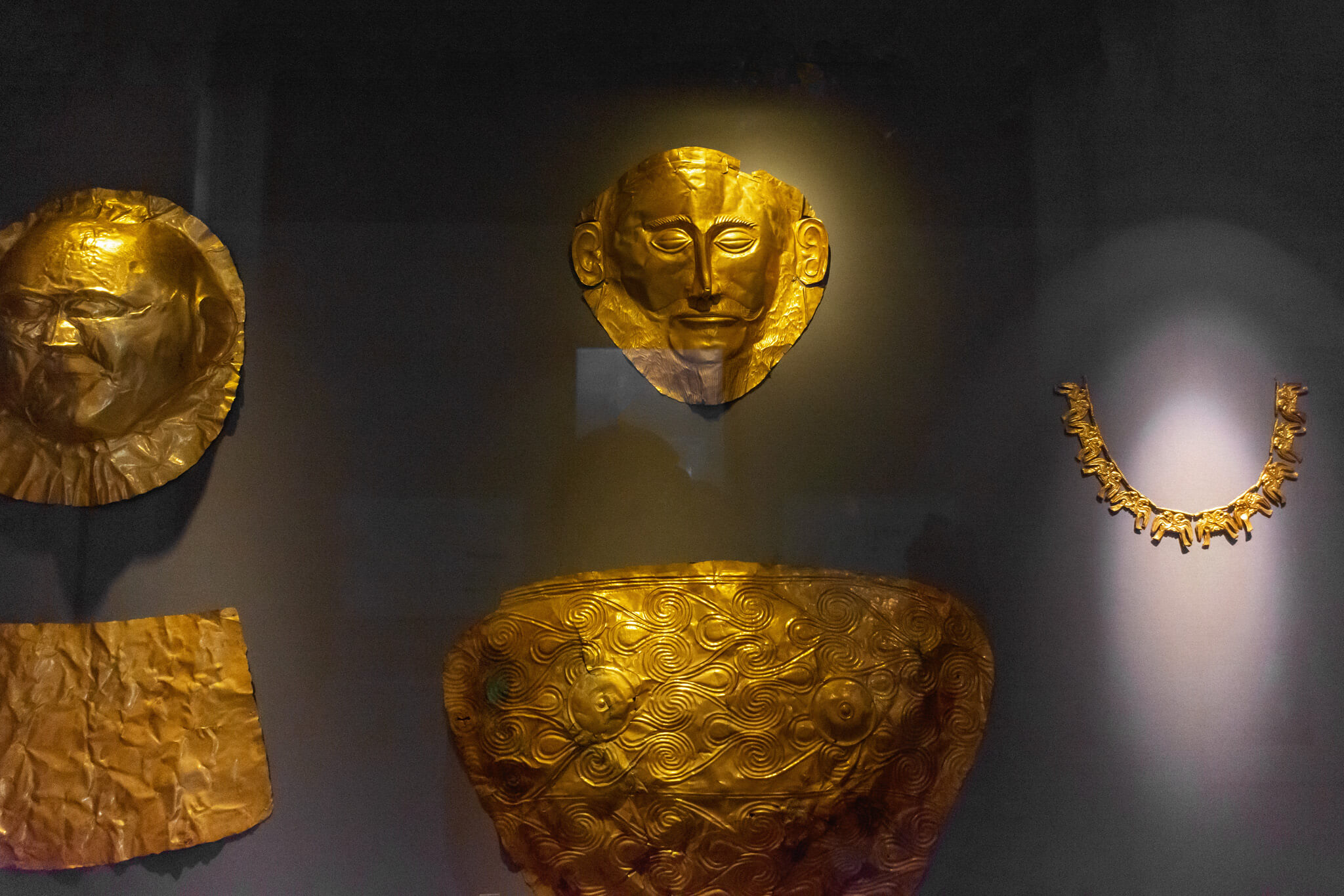
The Bronze Head of a Philosopher
Originating from the Hellenistic period, potentially the 2nd or 3rd century BC, the Bronze Head of a Philosopher is a thoughtful representation of ancient Greek intellectual pursuits. While the philosopher’s identity remains unknown, the sculpture’s distinguished features and expression convey a sense of contemplation and wisdom.
The Kouros Statues
Carved from marble and dating to the Archaic period (600–500 BC), the Kouros statues are exemplary representations of early Greek aesthetics. Unearthed at various locations, these statues depict idealized male forms, reflecting the artistic and cultural ideals of the Archaic era.
The Jockey of Artemision
Crafted during the Hellenistic period (140–130 BC), the Jockey of Artemision is a bronze sculpture that captures the dynamic energy of a horse race. Discovered in 1926 off Cape Artemision, its lifelike portrayal and intricate detailing showcase the mastery of Hellenistic bronze craftsmanship. Likewise, the statue provides a vivid glimpse into the sporting culture of ancient Greece.
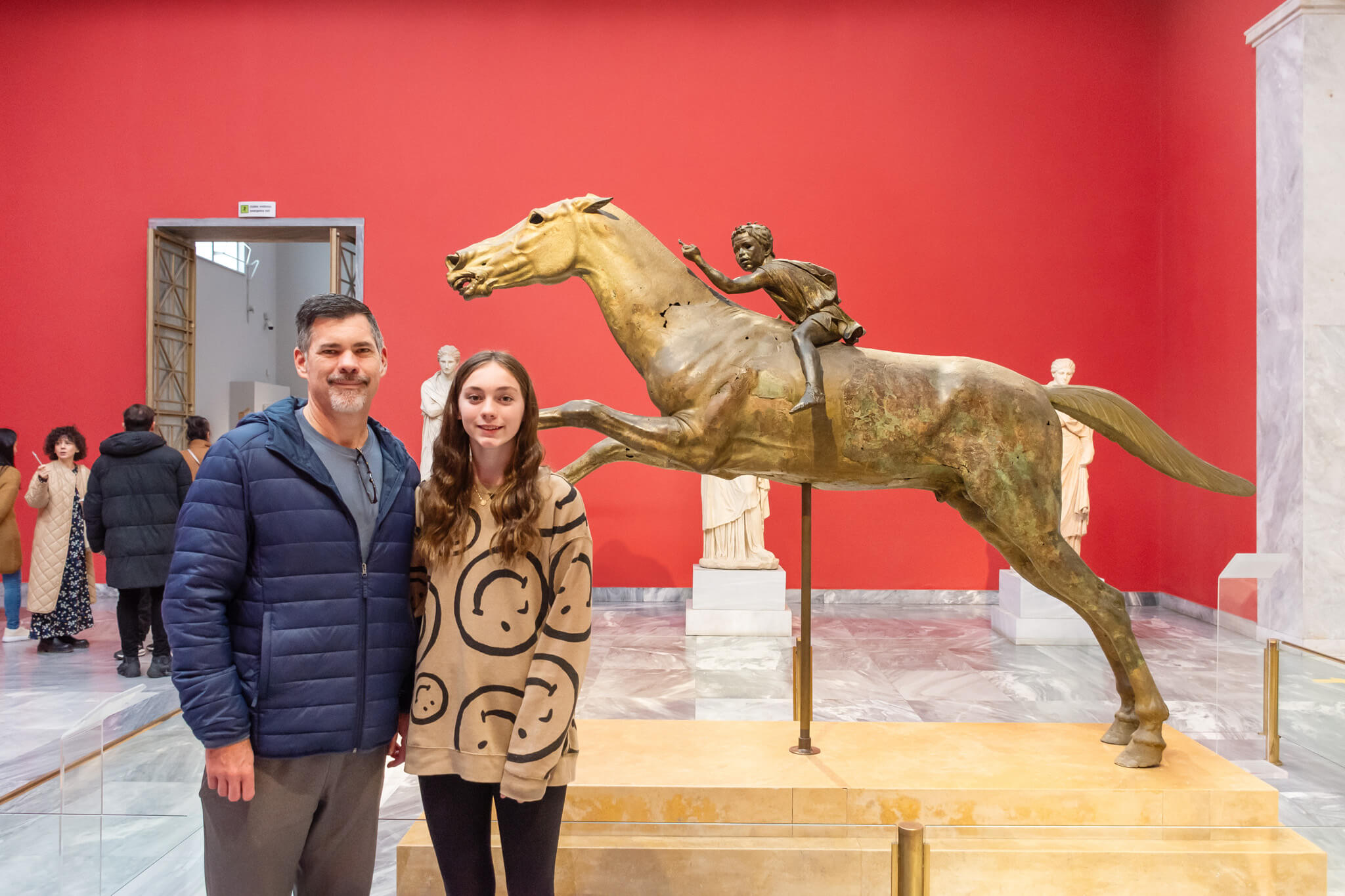

Marble Statue of Poseidon
Dating back to the 2nd century AD in the Roman Imperial period, the Marble Statue of Poseidon showcases the Roman influence on classical Greek themes. Found near Cape Sunion, Greece, the statue depicts the sea god Poseidon with a trident, emphasizing the enduring appeal of mythological symbolism.
Marble Statue of a Sphinx
Created in the 6th century BC, the Marble Statue of a Sphinx is a captivating artifact discovered in Thebes, Greece. Combining human and lion features, the sphinx represents mystery and intellect, offering a glimpse into ancient Greek fascination with mythical creatures and symbolic art.
Bronze Statue of Zeus or Poseidon
Crafted in the Classical Greek period (5th century BC), the Bronze Statue of Zeus or Poseidon, discovered in 1928 off Cape Artemision, exudes divine authority. With classical features and a regal demeanor, the statue represents ancient Greek culture’s religious and mythological aspects.
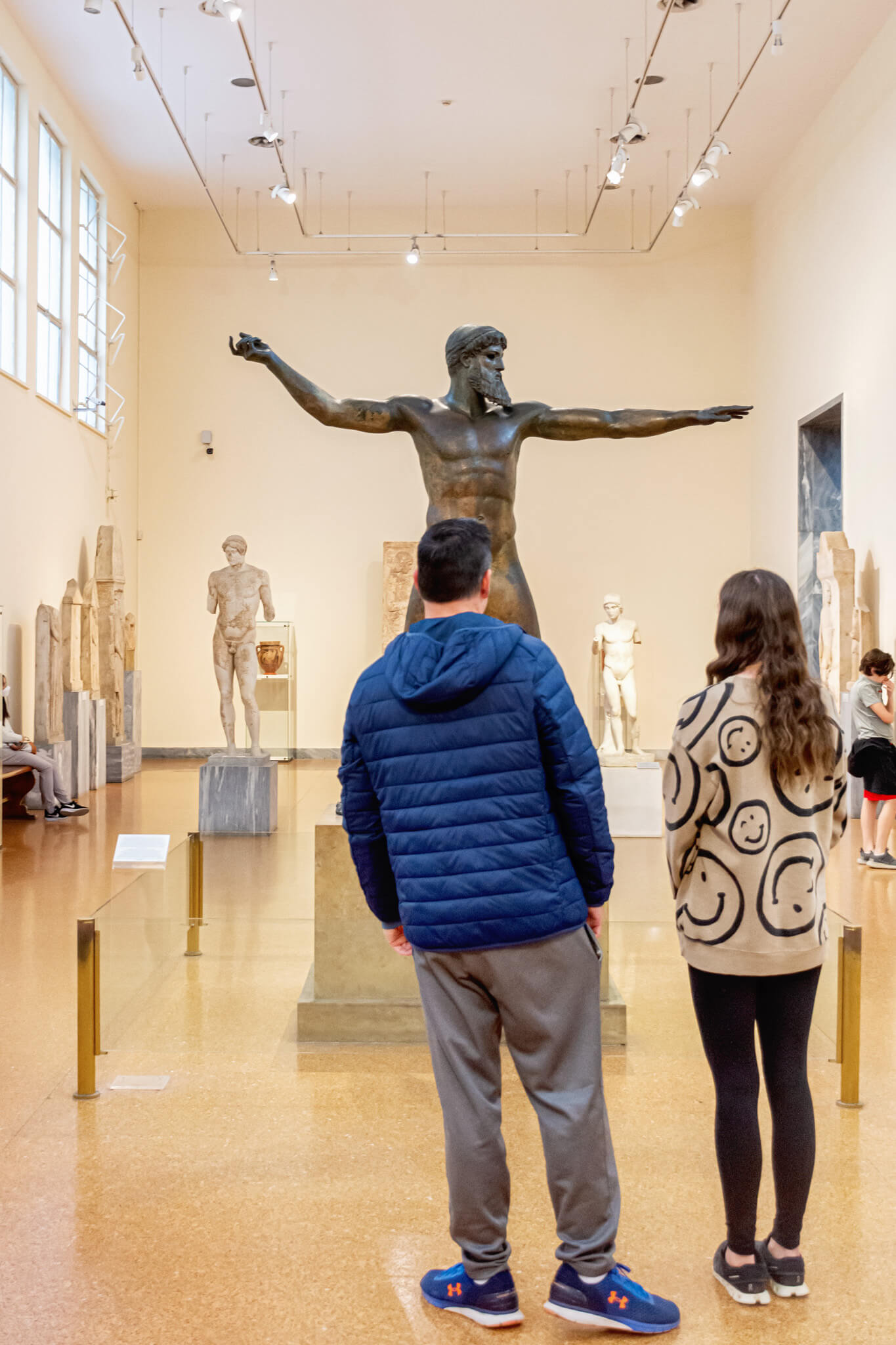
Bronze Statue of Emperor Augustus
Crafted in the 1st century BC during the Roman Imperial period, the Bronze Statue of Emperor Augustus is very notable. The statue was discovered in the Aegean Sea near Euboea, Greece. The statue, portraying Emperor Augustus in traditional Roman attire with a laurel wreath, serves as a visual testament to Roman imperial power and authority.
The Boxers Fresco
Dating back to the late 16th century BC, The Boxers Fresco is a Minoan masterpiece from the Palace of Knossos on Crete. The fresco vividly depicts Minoan sports culture during the Late Bronze Age. Again, it captures the intensity of ancient Greek boxing matches with its detailed portrayal of muscular athletes engaged in combat.
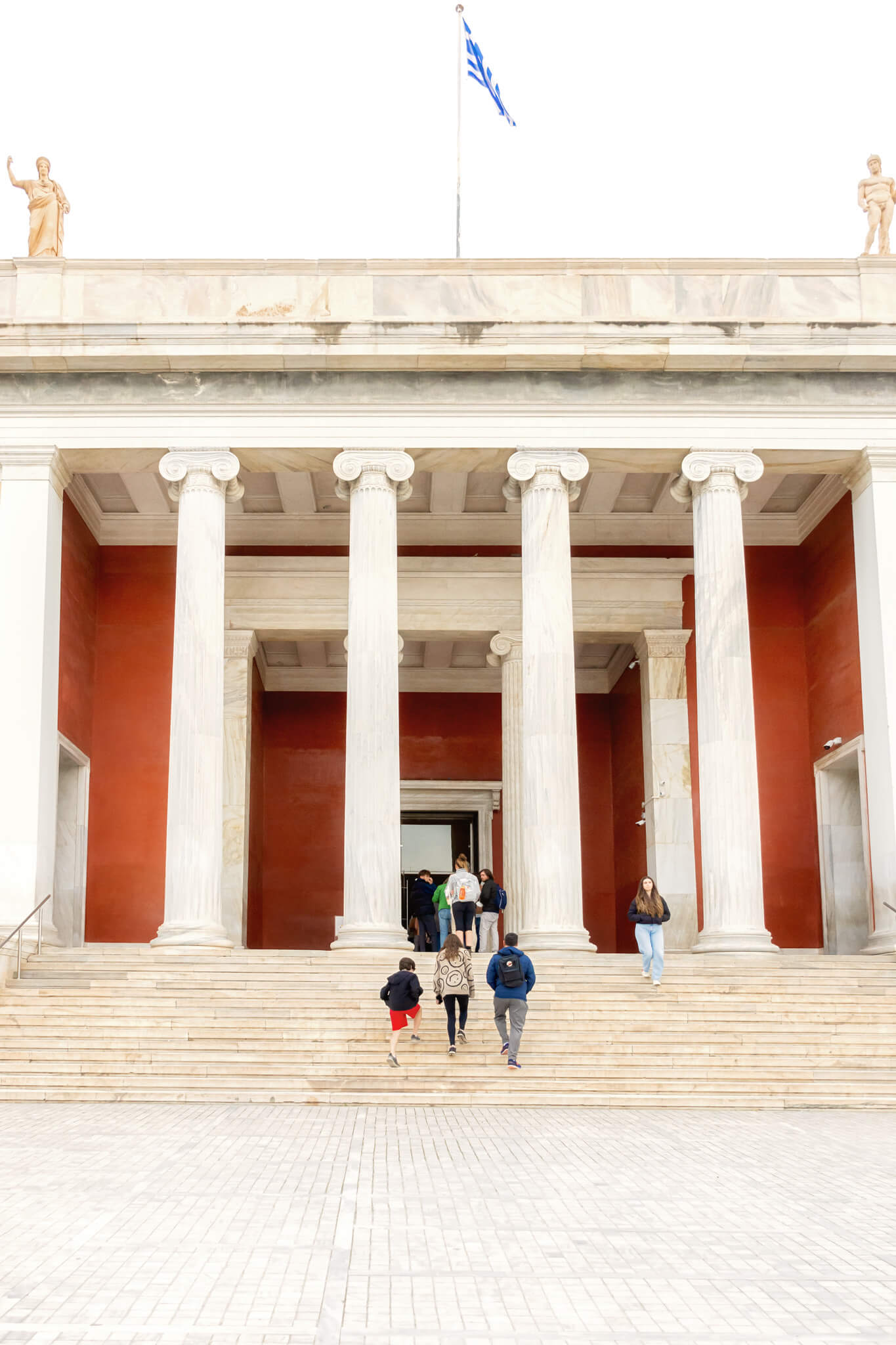
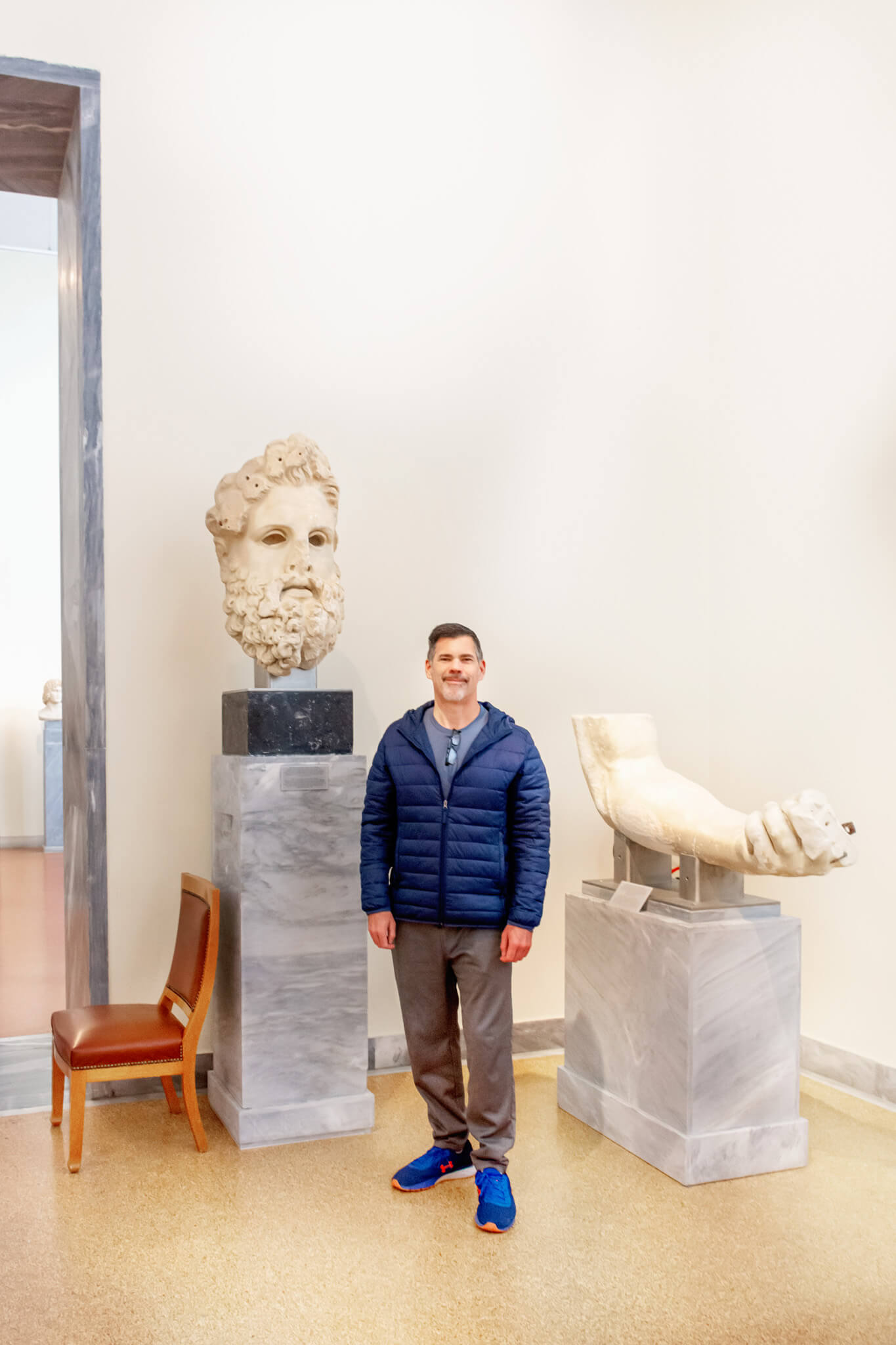
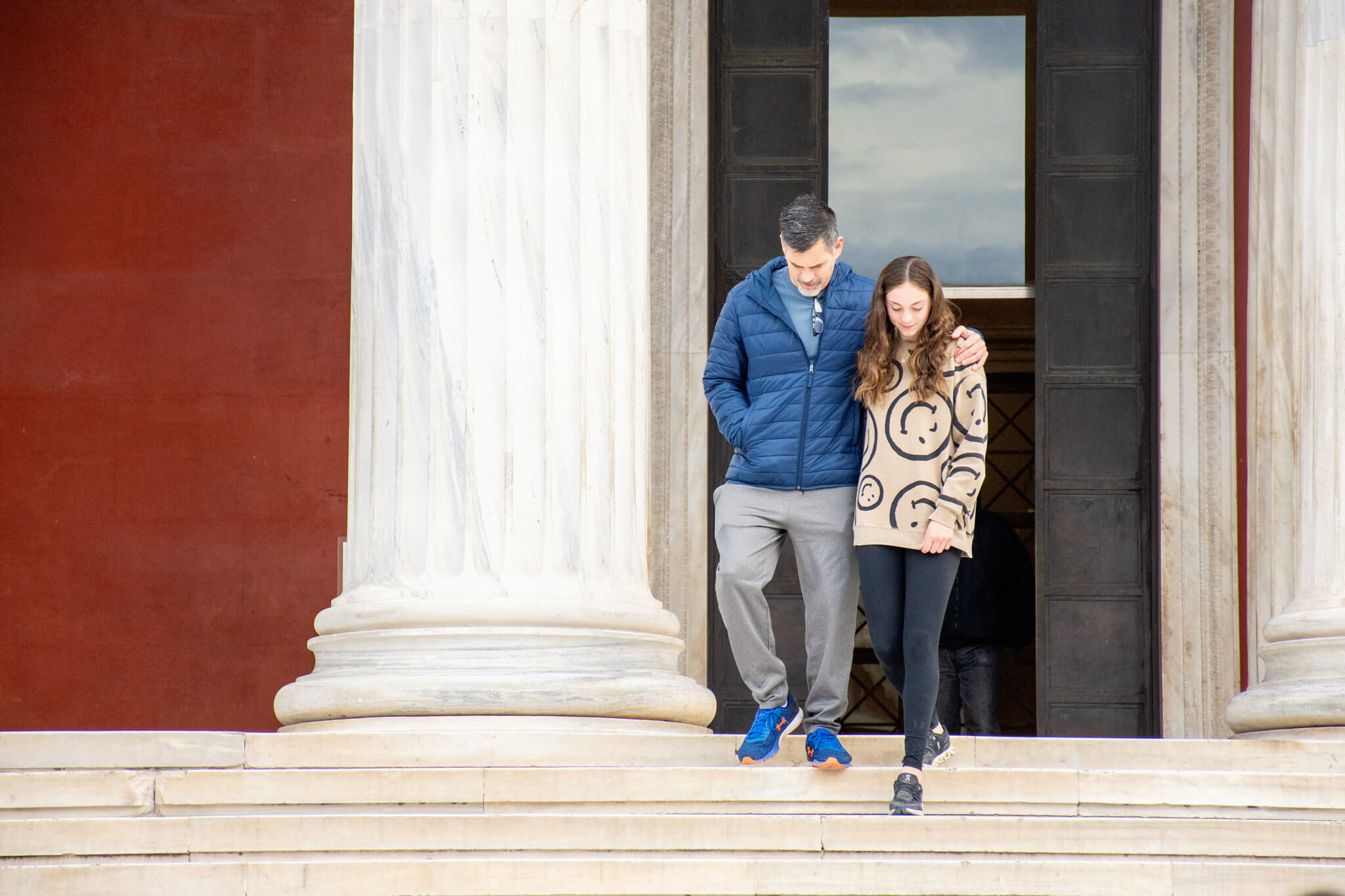
I Recommend Visiting the Athens National Archaeological Museum
The National Archaeological Museum is a wonderful half-day trip for you and your family. It’s a short Uber ride north of the famous Plaka District and the Parthenon, so it will fit easily into your Athens itinerary.
At the Museum, you can view iconic archaeological treasures like the Antikythera Mechanism and witness a thousand years of Greek art unfold before your eyes. It’s a place where you can channel your inner Indiana Jones, educate the family about ancient history, and explore the evolving story of the Greek civilization from its inception through today.
If you have ever visited this noteworthy Museum in Athens, leave me a comment! What was your favorite exhibit?
Pin This Athens National Archaeological Museum Post
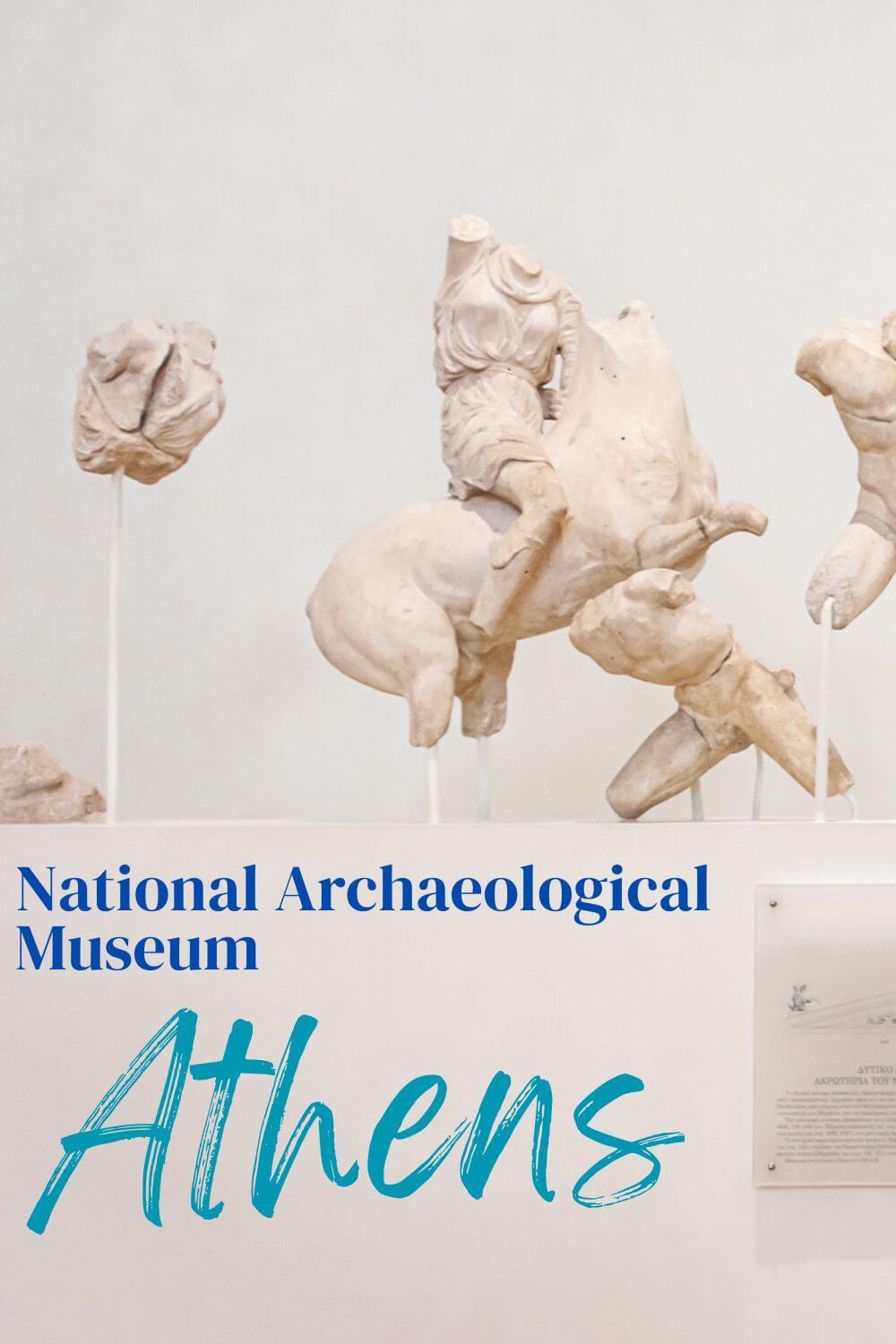
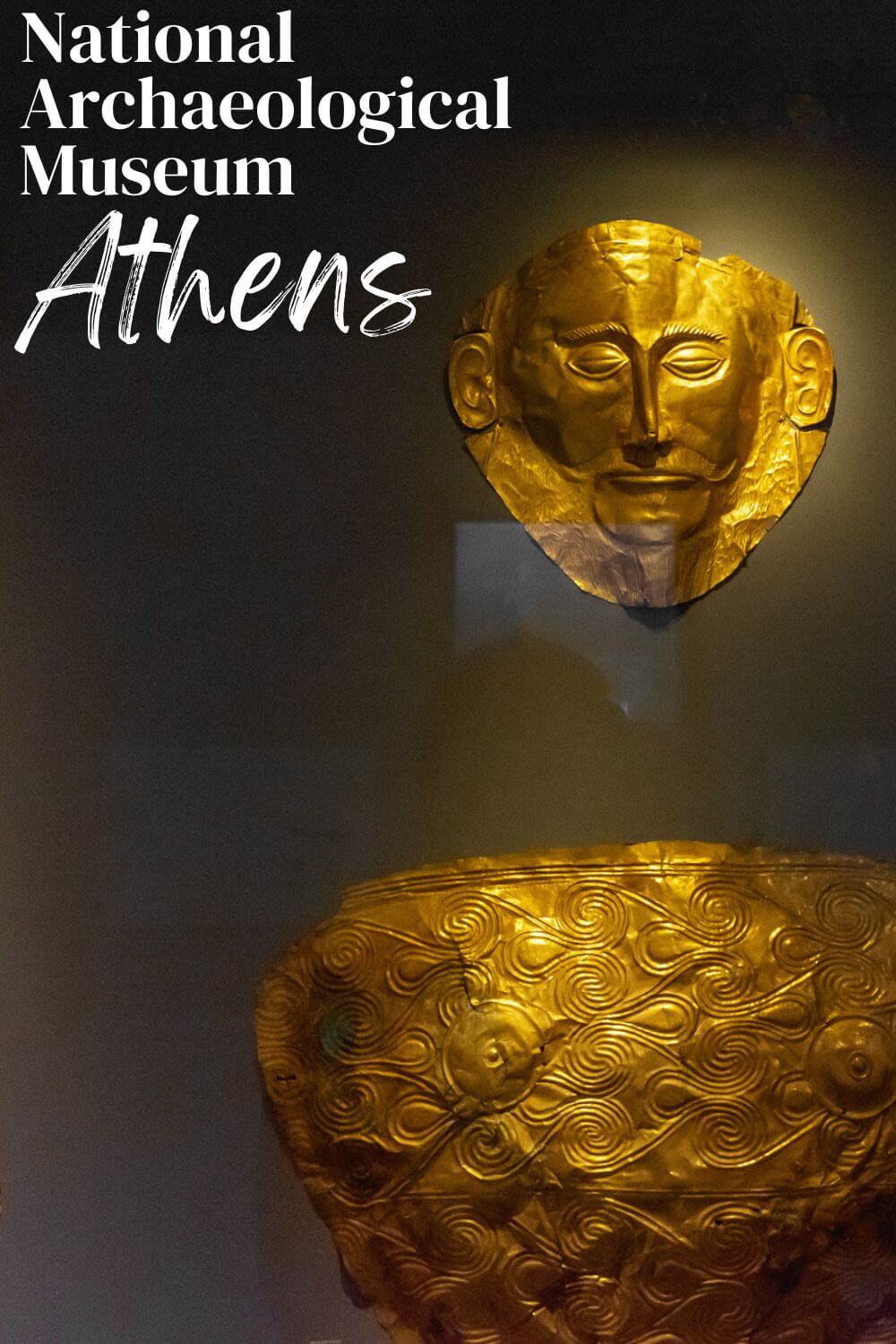
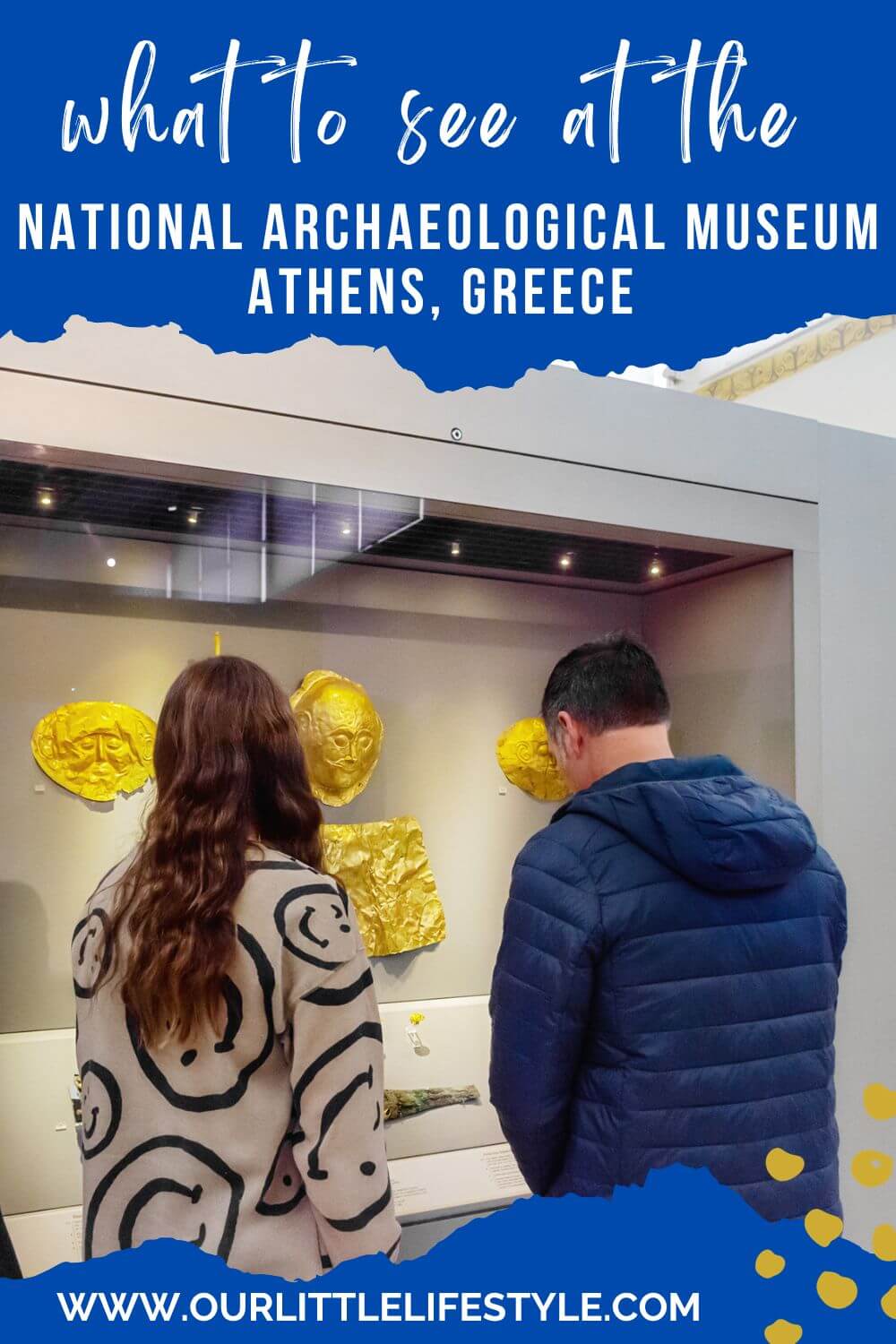
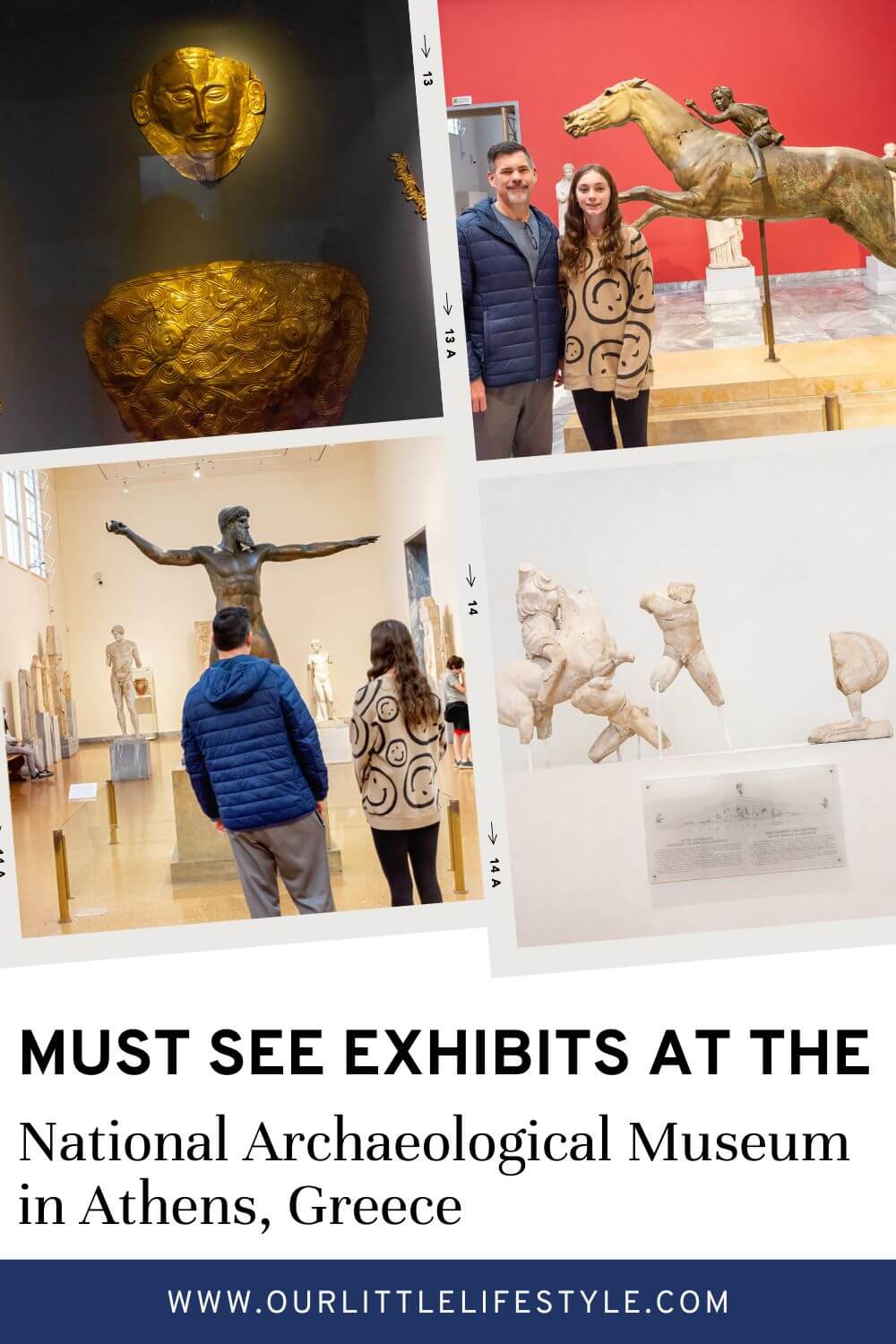



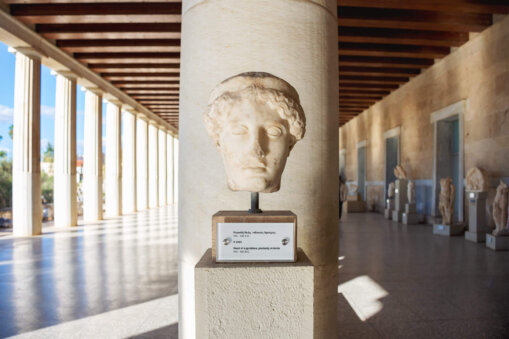
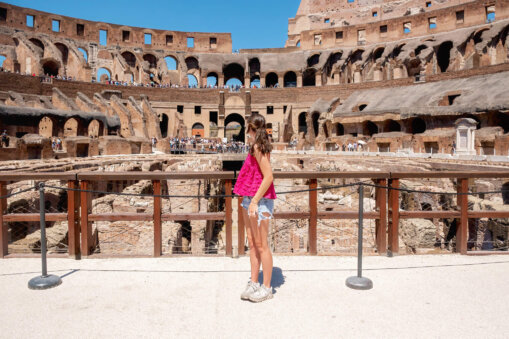
Thanks for this very enlightening post! I have a question: how did you manage to stay up to three hours in the Museum if you have to buy a one-hour time-slot ticket? I’m very worried since my family and I usually like to spend hours in a Museum like that… 🙂
The timeslot is just when you arrive to the museum.